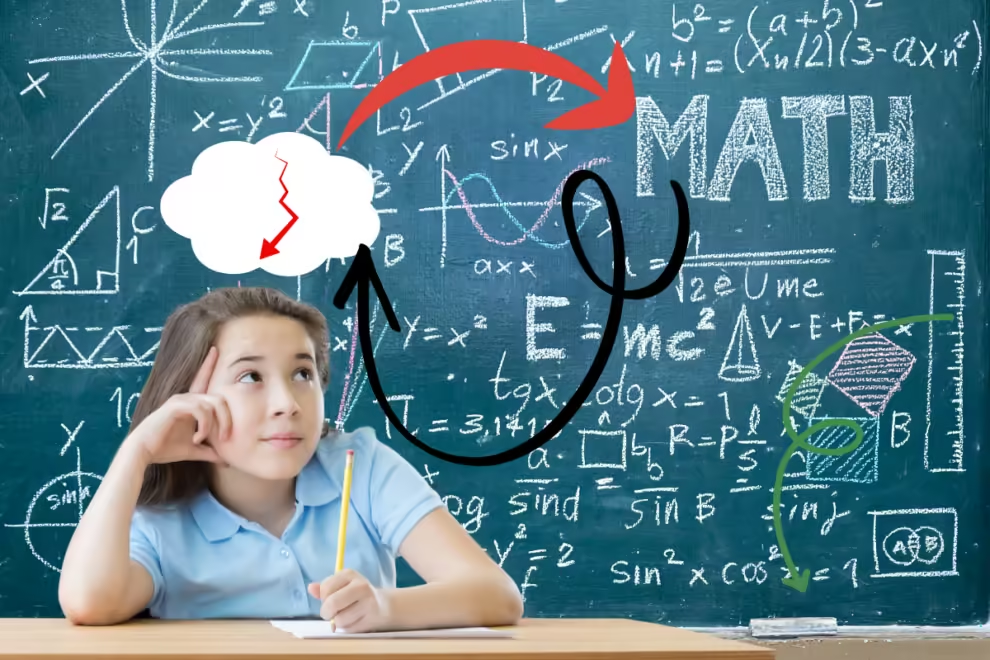Introduction: What We Call Middle School Mathematics
Insights from Frank Gardella Introduction Middle school is a transition period for students, especially in the teaching of mathematics. The school has been referred to as the “bridge between elementary school and high school,” and middle school math involves aspects of essential thinking, problem solving, and knowledge building that form the foundation for advanced mathematics. This blog explores what we refer to as middle school mathematics, with insights from Frank Gardella-a committed educator renowned for innovation and drive to accessible math education. Let’s find out how middle school math prepares students for academic success and why the years are critical for mathematical development.
1. What Do We Mean by Middle School Mathematics? An Introduction
Typically, middle school mathematics entails subjects like pre-algebra, geometry, and elementary statistics. At this level, students begin to be exposed to abstract thinking, developing a relationship with numbers, shapes, and equations. It is also during this time that students get exposed to complex math problems that require more than one solution step. By teaching and the curriculum, this transition can easily be made less painful in that the students learn some core elements that will serve them when they get to high school.
2. Frank Gardella and Middle School Mathematics Instruction
Frank Gardella is a well-known educator and curriculum developer who has created incredible and great contributions to the math education community. Frank Gardella is recognized for his innovative approach in ensuring that math becomes accessible and fun to learn with students. His focus on the development of resources that will encourage critical thinking and hands-on learning opened to many teachers’ ways of teaching. His strategies are especially impressive for middle schoolers; these focus on foundational skills in such a manner that fosters long-term understanding.
3. Central Concepts of Middle School Mathematics
Building Concepts of Algebra
Algebra is typically the first significant obstacle to middle school math. It introduces concepts involving variables, equations, and functions in an unfamiliar way. Still, algebra forms the backbone for all higher mathematics. By understanding algebra, one gets a toolkit that solves real life problems.
Geometric Fundamentals
It will teach the student shapes, angles, and spatial reasoning. Middle school geometry basically deals with perimeter, area, and volume. This is important because it does not only pertain to mathematics but also in architecture, engineering, and design.
Statistics and Probability
Statistics and probability are taught to students during the middle school period. It is a component of mathematics that instructs in analyzing data, averages, and possibilities of event occurrence. Statistics and probability have a lot of practical uses applied in various situations in real life, such as during experiments in science and analytics of sports games.
Mathematical Reasoning and Problem Solving
Mathematical thinking means knowing why an approach works. It encourages logical reasoning and step-by-step solution of problems. This is very important in the development of how to address complex mathematical problems and is generally applicable to much beyond mathematics.
4. Common Middle School Mathematics Challenges
- Some students find mathematics intimidating, at least when it gets more abstract. Among the common challenges includes:
- Abstract concepts hard to understand: The transition from concrete arithmetic to algebraic thinking is hard.
- Mathematics phobia: Many of the students fear mathematics either because of bad past experience or due to lack of confidence.
- Multi-step problems: Solving complex problems requires persistence and proper organization.
- Memorization and application: Learning formulas is one thing; application is a challenge
5. Strategies for Success in Middle School Math
Encourage Practice and Repetition
Math needs to be practiced regularly. Ideas are cumulative, so continuous practice helps reinforce what the students learn.
Use Real-Life Examples
Relating math to everyday life can help them see its value. For example, use budgeting, cooking, or even sports statistics to explain concepts in an engaging way.
Incorporate Visual Learning Tools
Abstract ideas are more understandable through graphics, such as graphs and charts, as well as interactive software. There are numerous websites that offer interactivity that will enable the student to understand complicated concepts.
Learning in groups and peer assistance
The student can learn through others who are also working on the problem. This can increase their confidence in mathematics and even enjoy math more.
Make it worthwhile to know
Explain the “why” of procedures
Encourage students to know why certain methods work and not just memorize steps. The reasoning of mathematics makes it easier for people to remember the information they were taught and builds a foundation in which they can have for future learning.
6. Mathematics in Everyday Life
Middle school math is not something to be prepared for a high school test. Math teaches important skills, like critical problem-solving, logical reasoning, and accuracy. These are very useful for many careers that have something to do with engineering, medicine, technology, or finance. In addition, mastery of mathematics improves everyday work-from keeping track of one’s finances to actual data-driven decision-making.
7. Why Frank Gardella’s Methods Inspire Modern Educators
Frank Gardella has spent his whole career working toward math education reform. His passion for experiential, accessible education has given teachers a way out of traditional means of teaching. Gardella is very clear that mathematics and mathematics instruction should resemble real-world application, critical thought, and imaginative problem solving. Focusing on basic skills and staying in touch with a child’s natural curiosity makes math easier.
8. Conclusion
Middle school mathematics is the spine of any student’s math education. It is during these early years that these students lay a better groundwork for the more advanced topics and their practical applications. Frank Gardella’s techniques are indeed one of a kind and may be considered as a blueprint for any educator who may want to inspire and facilitate the entry of these students into the hall of success in algebra, geometry, or statistics. For educators, parents, and students alike, embracing this journey is the first step toward a brighter academic future.










































Add Comment